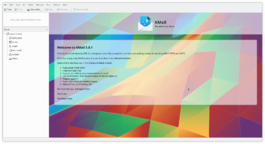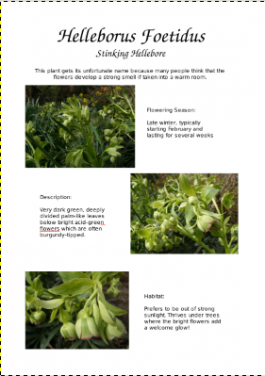User:Annew
I'm annew - aka Anne Wilson. I'm from Yorkshire, in the north of England, and I spend waayyyy too much time working on KDE :-) My interest has long been on user support, so this wiki is the natural extension of that.
Apart from providing support to all family members for their computing problems, I'm interested in gardening, sewing and embroidery, music and reading. In truth, though, little time goes on any of those except reading, these days.
Saved for re-use: Template:I18n/Language Navigation Bar
 |
KMail is the email component of Kontact, the integrated personal information manager of KDE. |
Image map:
Error: Image is invalid or non-existent. |
KWord
|
kwrite ftp://ftp.kde.org/pub/kde/Welcome.msg |
KWord Tutorial - First Layout Project
Template:I18n/Language Navigation Bar
In this lesson you will
- add text boxes and adjust their size and position
- format text
- add illustrations
- adjust their size and position
Launch KWord and select the Blank Document template. You will be presented with an empty page, with the size most likely for your region - usually A4 or Letter. Using the Format Menu, select Page Layout. For this project I am using A4, but it shouldn't take much adjustment to fit it to a Letter page.
For this kind of layout you need fairly generous margins, so set the top to 25mm and the other three sides to 20mm. If you work in Imperial, make them 1" at the top and 3/4" on the other sides.
In the right-hand toolbox, under Add Shape, click on Text and draw a box margin to margin and 3cm (about 1.25") high - you can see your cursor position on the ruler at the left. The result will be a coloured box, but that is just a marker. You get a Frameset dialog. This is going to be our banner heading, so you can change its name if yoiu wish, but you won't need to change anything else. Click and the text box fills with sample text. Now Click on the 'T' text editing tool - the sample text disappears and you can add your heading. I used URW Chancery L, 48pt for the title and 24pt for the subheading. Highlight both lines of text and click on ![]() to centre it. Create another text box, margin to margin, and 1.5cm deep, and add the sub-text:
to centre it. Create another text box, margin to margin, and 1.5cm deep, and add the sub-text:
|
This plant gets its unfortunate name because many people think that the flowers develop a strong smell if taken into a warm room |
That's the heading all sorted. Now we need to look at illustrating our page. Many cameras use a 4:3 format, so we will use Image frames that are 8cm x 6 cm.
 |
Repeat the process, creating this image box immediately below, and just touching the bottom margin. Select the file Hellebore3.jgp. |
| The third image box should be the same size, touching the right margin, and positioned vertically as close as you can to half-way between the other two. Select the file Hellebore2.jpg |  |
Now we need to tweak the position, to get them exactly where we want them. First, make sure you are using the default (pointer) tool ![]()
Look at the image frame that is best aligned to the left margin - select that frame by clicking on it, right-click and select 'Frame/Frameset Properties'. On the Geometry tab you can see position and size. If your margin is 20mm, set X: to 2cm. Correct the Width to 8cm and Height to 6 cm.
Repeat these settings on the other left-hand image, so that they are perfectly aligned. For the right-hand image, set the Width and Height to match the others. Setting X to 11cm should line it up nicely.
Now we turn our attention to adding the descriptive text boxes.




